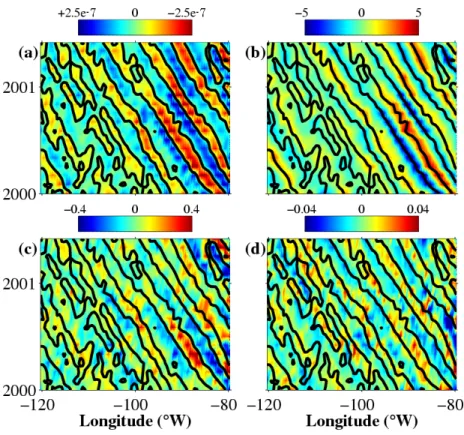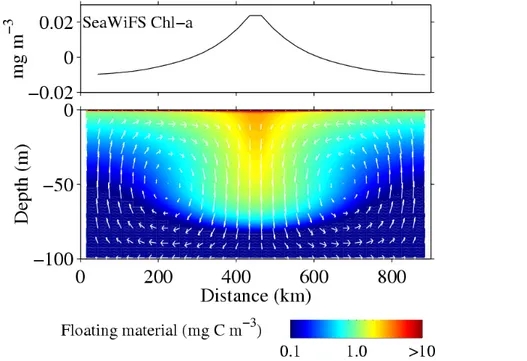Oceanic Rossby waves acting as a "hay rake" for ecosystem floating by-products
Texte intégral
Figure




Documents relatifs
It is shown that the state equation of a non- linear dynamical system having a bond graph model of integral causality is linear, if the space is augmented by using the output
This channel manifests in different phenom- ena, for example, the plasma wave excitation and the periodic structure in the ionosphere, increasing transparency for radio waves,
Using an ocean general circulation model (OGCM), Dewitte and Reverdin (2000) successfully reproduced Kessler and McCreary’s results in terms of annual subthermocline variabil- ity,
The development of submesoscale in- stabilities leads to strong net subduction of water associated with a dense outcropping filament, and later, the sub- mesoscale Rossby waves
Therefore, we study the seasonal and interannual variability of the observed phase relationships between CHLA and SLA signals in relation with the meridional gradient of
Our ®rst idea for investigating possible biases in the observed azimuthal distributions of AGWs was to feed the simulation code with a population of waves with the same frequencies f
Saint-Raymond [1, 2, 3] studying this phenomenon, dispersivity of PW and trapping of RW, as a consequence of the study of the oceanic waves in a shallow water flow subject to
Two of those propagators, called Poincar´e propagators, are then proved to satisfy dispersive estimates; that result relies on a spectral analysis (usual semi-classical theory does